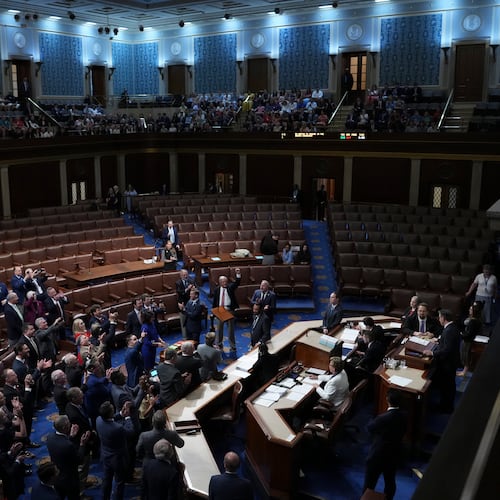Georgia Gov. Nathan Deal’s Bus Rapid Transit plan for SR 400 is a breath of fresh air amid stale and misguided transit proposals for the metro Atlanta region.
Unlike Atlanta’s costly, failing, fixed-rail Streetcar system – which MARTA plans to expand – Bus Rapid Transit (BRT) vehicles have the appealing appearance of light-rail cars but have rubber tires and travel on roads. Trips can be sped up by off-board fare collection at stations along the route.
BRT in densely populated areas often uses exclusive lanes. The SR 400 project, planned as part of a $1.8 billion express toll lanes project on SR 400, has BRT sharing the road with automobiles in the toll lanes. The governor has allocated $100 million for four exclusive BRT interchanges to facilitate buses entering and exiting the highway.
This BRT project is not the first announced or planned in metro Atlanta. At least as far back as 2002, the Georgia Public Policy Foundation’s legislative agenda promoted BRT. In 2004, Steve Stancil, then executive director of the Georgia Regional Transportation Authority, announced at a Foundation event, “[W]e’re actively working on BRT on I-75/I-575, and across the top of I-285, and more.”
It was not until this year, however, that the first dollars were allocated toward making BRT a Georgia reality: The federal government announced it would give MARTA $12.6 million toward a 9.4-mile BRT route, with about 30 stations, between Downtown and Midtown Atlanta. Plans are to begin construction in 2021 and complete it within three years. The route for the $48.6 million project would be part BRT-exclusive lane, part shared lane.
Not only is BRT quicker to implement than rail, it costs considerably less. MARTA took four years to build a two-mile extension to Sandy Springs (North Springs Station) from Dunwoody. Projected in 1999 to cost $381.3 million, it had cost $463.2 million when it opened in 2000.
The cost to extend heavy rail 12 miles up SR 400 from North Springs has been estimated at $2.2 billion to $2.4 billion. MARTA assumes a cost of $250 million per mile for heavy rail and $15 million per mile for freeway BRT.
Cost-effectiveness is a crucial consideration in low-density Atlanta: Transit dollars must go further to meet the needs of more people among the cobweb of destinations across the sprawling region.
BRT also offers flexibility. Traditional rail is most effective in densely populated areas. Transit use in metro Atlanta is already declining, competing with ride-share companies, taxis and telework. Instead of locking the region into a decades-long, costly romance with rail even as the rate of use drops, BRT enables policymakers to anticipate and quickly accommodate the fast-changing landscape in technology, travel and transit.
Further, piggybacking transit onto the growing toll network allows for the creation of a comprehensive regional transit network, serving more people, providing seamless travel far quicker and cheaper than building rail, and reducing dependence on taxpayer largesse to fund and maintain it.
Sharing the toll lanes makes logistical sense. Bob Poole, transportation analyst with the Reason Foundation, has noted how an exclusive BRT right of way “sounds pretty good until you think about how little those exclusive lanes would actually be used.”
Citing Connecticut’s (then-proposed) Hartford-to-New Britain busway, Poole pointed out in 2011 that even in peak usage, with buses three minutes apart, just 20 buses per hour would use the 9.4-mile route. Considering that a single lane of highway can handle about 1,600 vehicles per hour without congestion, an exclusive BRT lane wastes capacity. Even better, motorists opting to pay to use those toll lanes are, in essence, helping “paving the way” for BRT passengers to ride free.
If the governor’s plan takes place as envisioned, it’s the best of all worlds: a tool for transit in metro Atlanta that accommodates the widest need at the lowest cost to Georgia and taxpayers, and one that can quickly be adapted or discarded if it doesn’t.
About the Author
Keep Reading
The Latest
Featured


